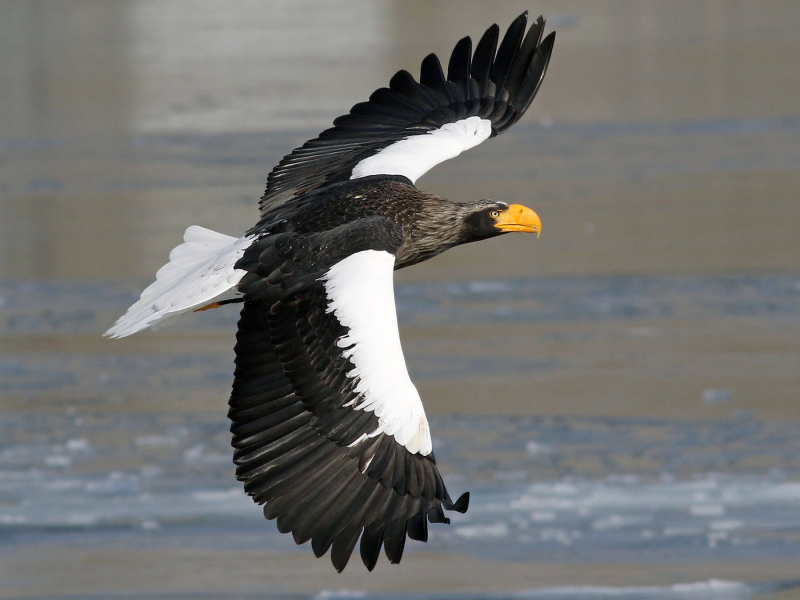Steller’s Sea Eagle
Steller's Sea Eagle (Haliaeetus pelagicus), also known as the Pacific sea eagle or white-shouldered eagle, is a large diurnal bird of prey in the family Accipitridae. It is the most noticeable eagle and may be seen on rivers and seashores in China, Russia, and Korea. Its stunning dark-colored body makes it simple to identify. In addition, it has a white forehead, a wedge-shaped tail, and a yellow beak. The lifespan of a Steller's sea eagle is 20 to 25 years, and it measures 85 to 105 cm long and weighs 5-9.5 kg. Steller's sea eagle females are bigger than males.
It is a carnivorous bird that eats crabs, carrion, gulls, small mammals, and fish or other aquatic life. It is also listed as one of the amazing black birds with yellow beaks. Steller's sea eagle is listed as vulnerable on the International Union for Conservation of Nature's Red List of threatened species.
One interesting aspect of its behavior is its cooperative breeding nature. Unlike many other eagle species, Steller's Sea Eagles often form monogamous pairs that work together to raise their offspring. Both males and females actively build and maintain the nest, incubate the eggs, and provide food for the chicks.
Steller's Sea Eagles have incredible eyesight, which plays a crucial role in their hunting strategies. With eyesight that is estimated to be about 3.6 times more powerful than that of humans, these eagles can spot their prey from great distances, even in low-light conditions. Their keen vision allows them to spot potential food sources, such as fish swimming beneath the water's surface or small mammals scurrying on the shore. This exceptional visual acuity makes Steller's Sea Eagles highly efficient predators in their coastal and riverine habitats.











